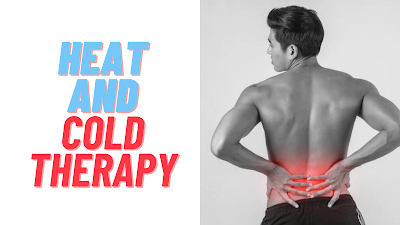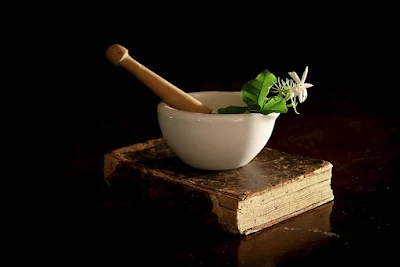Low side back pain is a common problem that can be caused by a wide range of factors, including poor posture, muscle strain, and injury. While medication and surgery are often used to treat this condition, there are also many natural remedies that can provide effective relief. From stretching and exercise to heat therapy and massage, there are a number of simple and easy-to-implement strategies that can help alleviate low side back pain.
In this article, we'll explore 10 of the most effective ways to relieve low side back pain naturally, so you can get back to your daily activities without discomfort. Whether you're dealing with occasional aches or chronic pain, these tips can help you find relief and enjoy a healthier, more comfortable life. So, let's dive in and discover the best natural remedies for low side back pain!
Causes of low side back pain
 |
| Image credit goes to Freepik |
Low side back pain can be caused by a variety of factors. Poor posture, muscle strain, and injury are some of the most common causes. Poor posture can put pressure on the lower back, causing pain and discomfort. Muscle strain can occur when you overuse a muscle or lift something heavy. Injury can occur from a fall or accident. Other causes of low side back pain include herniated discs, spinal stenosis, and osteoarthritis.
It's important to identify the cause of your low side back pain so you can find the most effective treatment. If you experience chronic pain, it's a good idea to consult with a healthcare professional to rule out any serious underlying conditions.
The importance of natural remedies
While medication and surgery can be effective treatments for low side back pain, natural remedies can often provide relief without the side effects or risks associated with these treatments. Natural remedies can also be less expensive and more accessible than medical treatments. By incorporating natural remedies into your daily routine, you can help prevent and alleviate low side back pain.
Exercise and stretching for low side back pain relief
Exercise and stretching are simple and effective ways to relieve low side back pain. Exercise helps strengthen the muscles that support the spine, reducing the risk of injury and pain. Stretching helps improve flexibility and range of motion, reducing stiffness and discomfort.
One effective exercise for low side back pain relief is the pelvic tilt. Lie on your back with your knees bent and feet flat on the floor. Tighten your abdominal muscles and tilt your pelvis upward, flattening your back against the floor. Hold for 5 seconds, then release. Repeat 10 times. Another effective exercise is the knee-to-chest stretch. Lie on your back with your knees bent and feet flat on the floor. Bring one knee up to your chest and hold for 5 seconds, then release. Repeat with the other leg.
Stretching can also help relieve low side back pain. One effective stretch is the hamstring stretch. Sit on the floor with your legs straight in front of you. Reach forward and touch your toes, keeping your legs straight. Hold for 30 seconds, then release. Another effective stretch is the piriformis stretch. Lie on your back with your knees bent and feet flat on the floor. Cross one leg over the other and pull your knee towards your opposite shoulder. Hold for 30 seconds, then release. Repeat with the other leg.
Massage therapy for low side back pain relief
Massage therapy is a natural and effective way to relieve low side back pain. Massage helps release tension and tightness in the muscles, reducing pain and discomfort. It also helps improve circulation, which can help reduce inflammation and promote healing.
One effective massage technique for low side back pain relief is deep tissue massage. This technique involves applying pressure to the deeper layers of muscle tissue, helping to release tension and tightness. Another effective massage technique is trigger point massage. This technique involves applying pressure to specific points on the body that are causing pain or discomfort.
Heat and cold therapy for low side back pain relief
 |
| Image credit goes to Freepik |
Heat and cold therapy can be effective ways to relieve low side back pain. Heat helps improve circulation and relaxes the muscles, reducing pain and discomfort. Cold helps reduce inflammation and numbness, reducing pain and discomfort.
One effective heat therapy for low side back pain relief is a hot compress. Apply a hot compress to the affected area for 15-20 minutes, 2-3 times a day. Another effective heat therapy is a warm bath. Soak in a warm bath for 20-30 minutes, 2-3 times a week.
One effective cold therapy for low side back pain relief is an ice pack. Apply an ice pack to the affected area for 15-20 minutes, 2-3 times a day. Another effective cold therapy is a cold bath. Soak in a cold bath for 10-15 minutes, 2-3 times a week.
Essential oils for low side back pain relief
 |
| Image credit goes to Freepik |
Essential oils can be effective ways to relieve low side back pain. Essential oils are natural oils extracted from plants that have therapeutic properties. They can be used topically or inhaled to provide pain relief and relaxation.
One effective essential oil for low side back pain relief is peppermint oil. Peppermint oil has analgesic and anti-inflammatory properties that can help reduce pain and inflammation. Another effective essential oil is lavender oil. Lavender oil has calming and relaxing properties that can help reduce stress and tension, which can contribute to low side back pain.
Acupuncture for low side back pain relief
Acupuncture is a natural and effective way to relieve low side back pain. Acupuncture involves the insertion of thin needles into specific points on the body to stimulate the flow of energy and promote healing. It can help reduce pain and inflammation, improve circulation, and promote relaxation.
Chiropractic care for low side back pain relief
 |
| Image credit goes to Freepik |
Chiropractic care is a natural and effective way to relieve low side back pain. Chiropractors use spinal manipulation and other techniques to realign the spine and alleviate pain and discomfort. Chiropractic care can also help improve posture, reduce muscle tension, and promote healing.
Other natural remedies for low side back pain relief
There are many other natural remedies that can be effective ways to relieve low side back pain. Some of these remedies include acupuncture, yoga, meditation, and biofeedback. These remedies can help reduce stress and tension, improve circulation, promote relaxation, and reduce pain and discomfort.
Conclusion
Low side back pain can be a frustrating and debilitating condition, but there are many natural remedies that can provide effective relief. From exercise and stretching to massage therapy and heat and cold therapy, there are a number of simple and easy-to-implement strategies that can help alleviate low side back pain. By incorporating these natural remedies into your daily routine, you can help prevent and alleviate low side back pain, and enjoy a healthier, more comfortable life.




Great tips for managing low side back pain! I’ve been using Absolute Essential's Deep Relief Blend, and it has worked wonders for soothing my discomfort. Adding these exercises and stretching techniques to my routine sounds like the perfect combination for even more effective relief!
ReplyDeletehttps://absoluteessential.com/